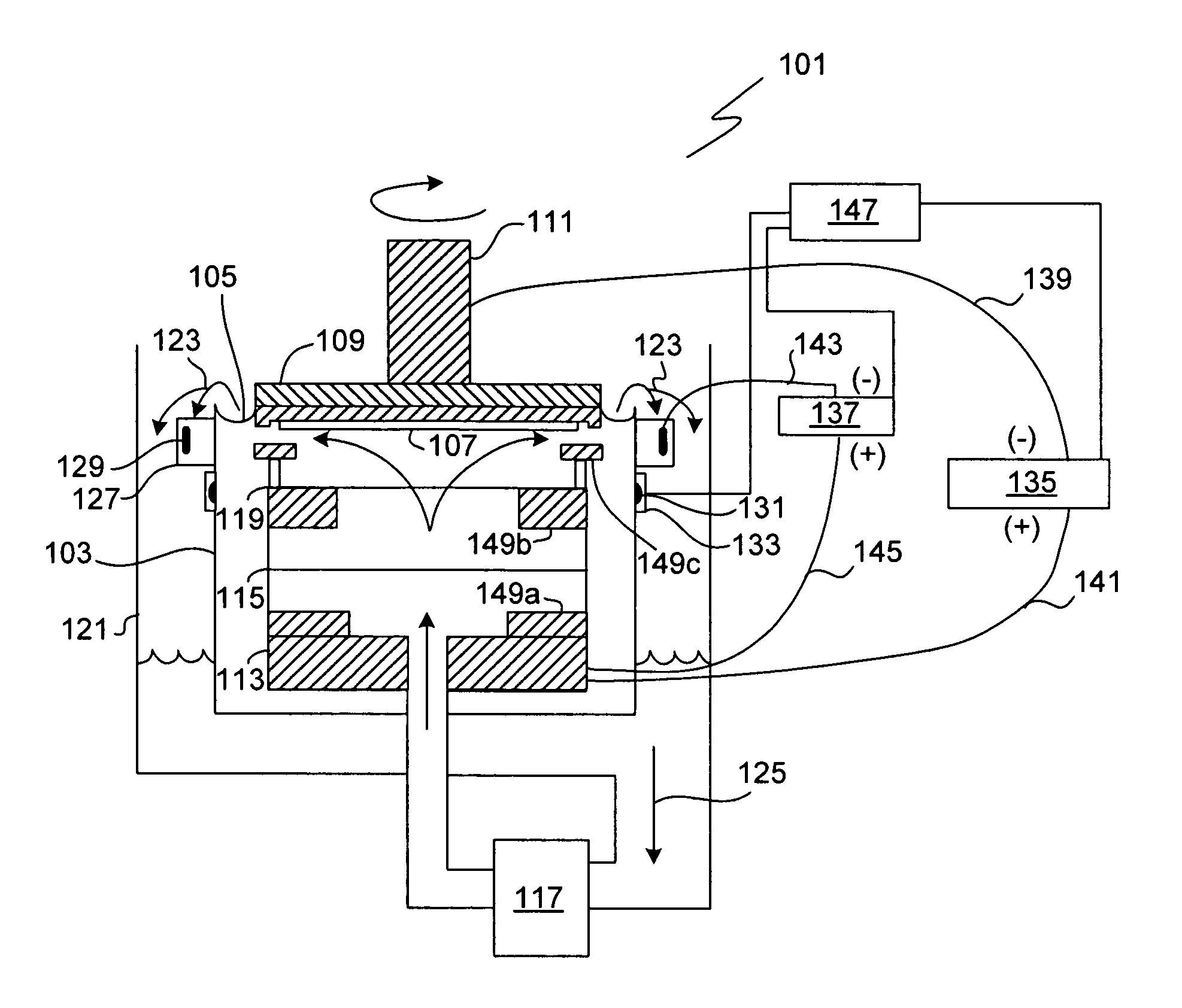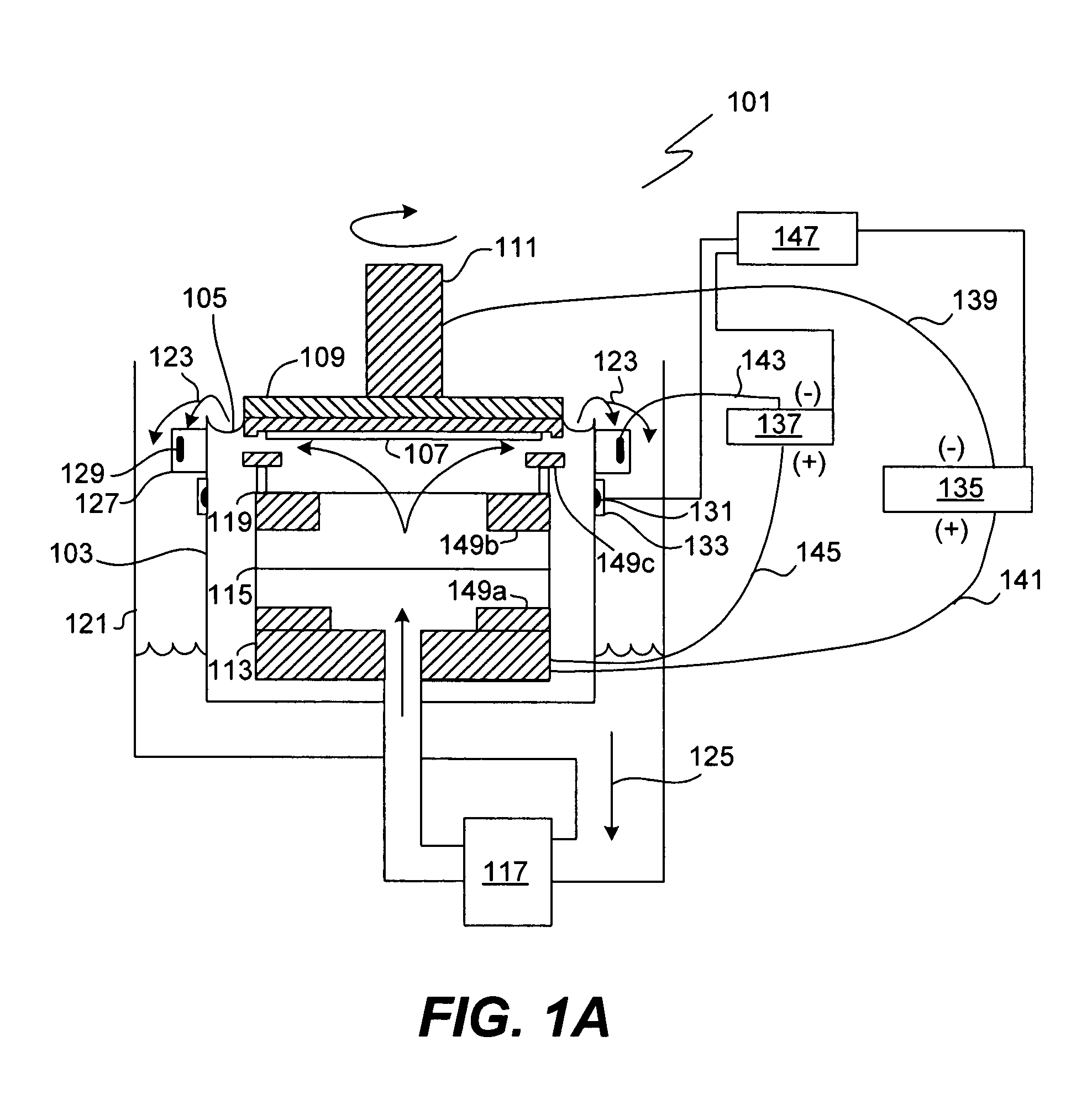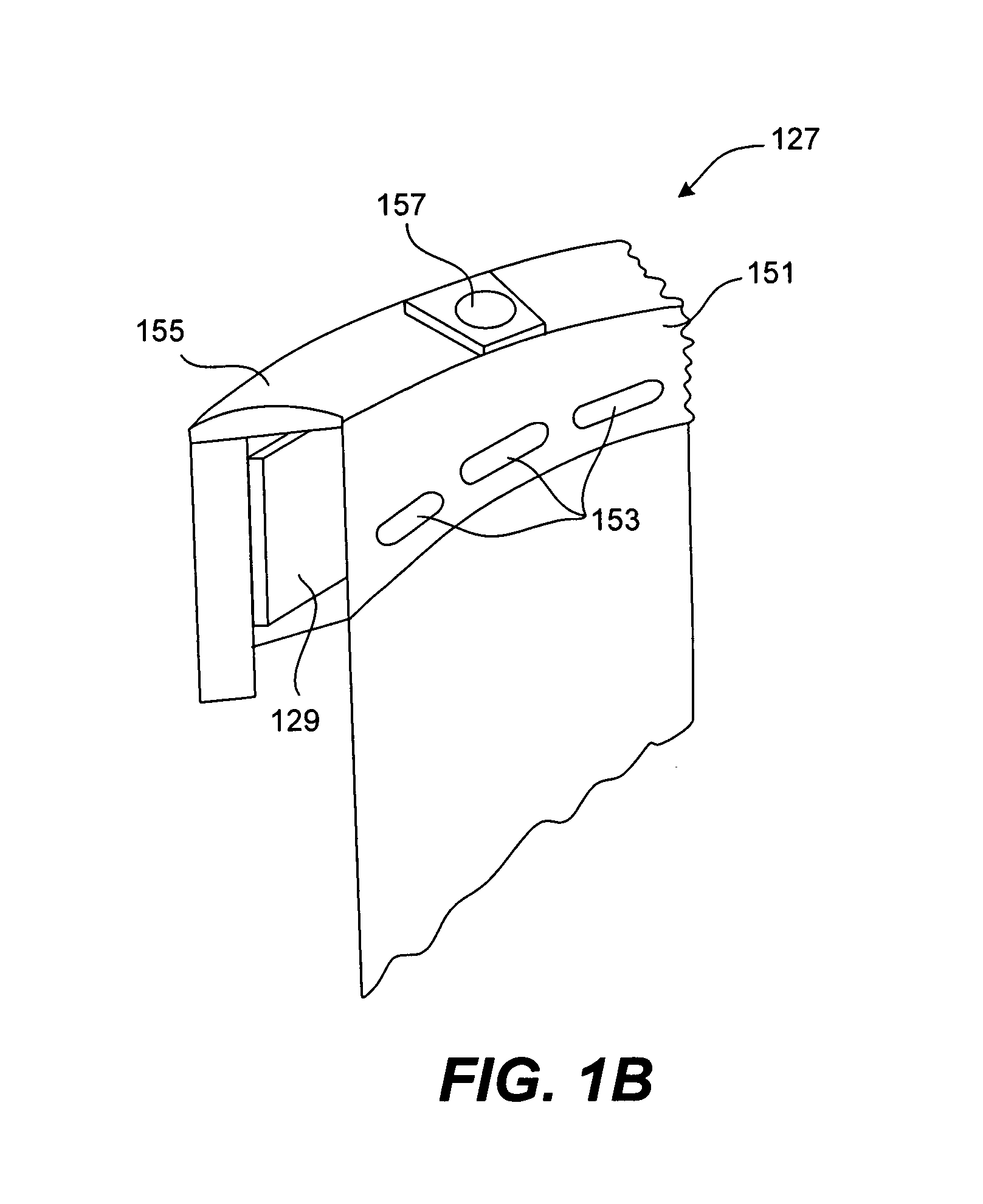Method and apparatus for electroplating including remotely positioned second cathode
a second cathode and electroplating technology, applied in the direction of coatings, electric circuits, manufacturing tools, etc., can solve the problems of increasing the thickness of the deposited copper layer relative to the edge of the wafer, reducing the uniformity of electroplating, and not providing sufficient current redistribution for plating, so as to improve the uniformity of plated layers and improve the effect of uniformity
- Summary
- Abstract
- Description
- Claims
- Application Information
AI Technical Summary
Benefits of technology
Problems solved by technology
Method used
Image
Examples
Embodiment Construction
[0035]This invention employs a remotely positioned second cathode, capable of modulating current density at the surface of the wafer. One general advantage of the second cathode is that it allows fine control of the compensating effect by tuning the current or potential at the second cathode. Thus, it is relatively easy to move from providing a large effect at the beginning of the deposition process when the current is carried primary by the seed layer to a smaller effect after some amount of copper has been plated and the terminal effect is diminished. The remote position of this cathode in accordance with embodiments of this invention allows the insulating shields and resistive elements disposed in the plating bath to operate in conjunction with the cathode and shape the current profile experienced by the wafer, and therefore act as a “virtual second cathode”. In a preferred embodiment, the second cathode is disposed outside of the main plating vessel and is separated from the mai...
PUM
| Property | Measurement | Unit |
|---|---|---|
| Height | aaaaa | aaaaa |
| Height | aaaaa | aaaaa |
| Thickness | aaaaa | aaaaa |
Abstract
Description
Claims
Application Information
 Login to View More
Login to View More - R&D
- Intellectual Property
- Life Sciences
- Materials
- Tech Scout
- Unparalleled Data Quality
- Higher Quality Content
- 60% Fewer Hallucinations
Browse by: Latest US Patents, China's latest patents, Technical Efficacy Thesaurus, Application Domain, Technology Topic, Popular Technical Reports.
© 2025 PatSnap. All rights reserved.Legal|Privacy policy|Modern Slavery Act Transparency Statement|Sitemap|About US| Contact US: help@patsnap.com



